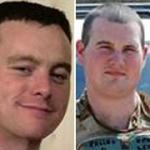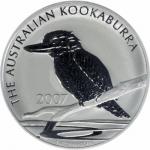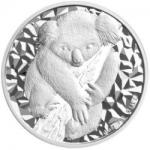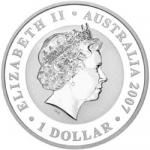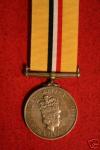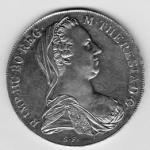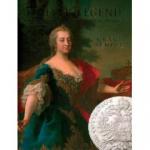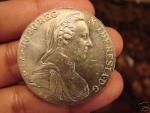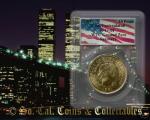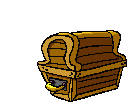-
Posts
3,517 -
Joined
-
Last visited
-
Days Won
27
Content Type
Profiles
Forums
Blogs
Gallery
Events
Store
Everything posted by bigjarofwasps
-
-

Op Telic Casualties & Fatalities
bigjarofwasps replied to bigjarofwasps's topic in Modern Campaigns and Conflicts
British Soldiers Killed In Iraq Named Updated: 17:38, Friday August 10, 2007 Two British soldiers killed by a roadside bomb in Iraq on Thursday have been named. Lance Sergeant Chris Casey and Lance Corporal Kirk Redpath died in an attack on their patrol, the Ministry of Defence said. Lance Sergeant Chris Casey and Lance Corporal Kirk RedpathThe men from 1st Battalion Irish Guards died, and another two were seriously injured, when an bomb exploded just after midnight local time. The soldiers were travelling in a convoy to the north of the Rumaylah oilfields, which is to the west of Basra City. Sgt Casey's Platoon Commander, Captain Stephen Wolseley, paid tribute. He said: "It is so difficult to write about Lance Sergeant Chris Casey at this time of great sadness as in my mind he was the most jovial and up-beat person I knew, the one person I could rely on to raise a smile or a laugh from the Platoon at a difficult time; his laugh and banter were totally infectious." Paying tribute to Cpl Redpath, Captain Tim Rogers said: "Where does one begin when trying to write about a chap who meant so much to so many people? "Lance Corporal Redpath had the ability to amuse and entertain whilst sticking to his core business of delivering the daily intelligence picture to the Squadron." -
Hi TP, well that clears that up, and makes perfect sense to!! But what about his use of DFC after his name is this allowed or not? Seems a bit of a shame if he`s not allowed to use it. Going slightly for a minute. What would happen say if say Pte Jones of the Austrialian Medical Corps won a British VC, then a few years later won the Austrialian VC, would he have two seperate VC`s or the British one with Aussie bar, or visa versa?
-
TP, found it!!! I know I`d read it somewhere!!!!! Medal News November 2005 (Operational Honours List 25, released on the 9th Sept). Page 8 an article in News & Reviews, its a lengthy article, so I won`t be typing it out here in full, however, I quote... "Watkins is the first time a DFC has been awarded to an Austrialian, as a foreign award rather than an Imperial award. Watkins will wear his DFC at the end of his medal group along with any other foreign awards, but will not be able to use the post nominal letters" Medal News is well known for its mistakes, so this maybe duff gen. Just open their Medal Year book, and you`ll find any number of mistakes, in there, but lets no go there right now. I`d very much like to hear from anyone who can confirm or deny their claim in this article.
-
TP, have looked threw old soldier mags, can`t find it, so it might well have been in Medal News. I`ll keep looking, but its the priverbial needle in a haystack!!!
-
Very nice Tim, thanks for sharing it with us. I`ve not seen one like its kind before, leave it with me I`ll see if I can find anything out about it for you.
-
Cheers TP, theres some cracking photographs there, did you take them? The Soloman Islands campaign sounds like a very interesting tour to say the least!!! Going back to the DFC guy, an interesting twist in the tale in the article I read it stated that because he wasn`t a UK national, his DFC would be worn after his Aussie medals, and that he wasn`t allowed to have the post letters DFC after his name. But looking at his photo, he seems to be wearing his DFC ribbon first. I`d be interested to know if the ruling has been changed, and whether he`s since be allowed to use DFC, and or which order his ribbon should be worn. Any ideas? I seem to remember reading the article in Soldier Magazine, I`ll see if I can find it again, and get back to you. Gordon.
-

Maria Theresa Silver Thaler
bigjarofwasps replied to bigjarofwasps's topic in Coins & Commemorative Medallions
"In the days beyond recall when i was surgeon to the Aden Protectorate Levies in the Western Aden Protectorate(now Yemen) in addition to my usual duties i was goatherd and paymaster. This latter duty consisted in counting out Marie Theresa thalers (MTT)from a wooden or metal box,paying the levy and getting a thumbprint receipt. The boxes wereleft lying about unguarded and uncounted as they were so heavy it took 4 men to lift one. this book gives an excellent account of the life and times of Empress Marie Theresa of Austria and details the history,romance ,intrigue,forgery and jewellery relating to the MTH.The thaler was first minted in 1741 and is still minted to this day.Since 1780 the year of her death all thalers have that date.In aa 4-600 million thalers have been minted in mints mainly in Austria but also in Birmingham and London In its hayday thalers were used all over Arabia and North Africa but isnow used mainly as decoration and jewellery." -

Maria Theresa Silver Thaler
bigjarofwasps replied to bigjarofwasps's topic in Coins & Commemorative Medallions
"A Silver Legend: The Story of the Maria Theresa Thaler by Clara Semple 178pp, Barzan Publishing, ?19.95 "At Talh market in northern Yemen, I once watched an old man pay for a fresh clip of Kalashnikov ammunition with some weighty silver coins. Neither Yemeni or Saudi riyals, these reassuringly hefty discs were date-stamped 1780 and bore the image of a large busty woman on one side, an impressively feathery eagle on the other. They were silver dollars of the Austro-Hungarian empire and the woman was Maria Theresa, empress from 1740 to 1780. Despite generous offers from the market-trader to sell me various machine guns, bazookas and even a tank ("only two days to deliver!"), I bought the money from him instead, paying a small premium to avoid some obvious forgeries. Little did I know that in some senses all the coins were forgeries, and a bright copy made in the sands of Talh the day before was at least as interesting as my supposed originals. Those, as Clara Semple points out in her intriguing book, could easily have been minted in Birmingham in the 1950s, or Brussels, London, Paris, Bombay, Rome or Vienna at some time in the previous two centuries - almost all had that 1780 date. As for rarity, around 400 million are known to have been issued in that period. The tale of how this particular coin came to be such a cornerstone of trade for so long - a true international currency - starts with the first voyages of discovery, when merchants found that many remote peoples wanted silver bullion in exchange for their goods, certainly not English woollens. And yet verifying silver content is neither simple or practical: a coin that could be trusted was the answer." "Once traders began using the coin down the Red Sea, particularly in the burgeoning coffee trade, they found demand was insatiable. Not only did the silver content make them reliably valuable, the handsome currency made excellent jewellery with the added appeal of being something of a fertility fetish. On that score, I would have liked a few words from the various people, mainly women, who are depicted in the book - the photographs are wonderful - all wearing the Maria Theresa dollar. What we do get, however, is some sterling anecdote. When Barclays Bank opened a branch in Addis Ababa in 1941, the cashiers were inundated with deposits of the coins, often retrieved from where the owners had buried them. The process of counting was so arduous that one teller devised a gas mask to survive the dust. Travellers found the Maria Theresa both a curse and a blessing. Wilfred Thesiger, setting out to cross the Empty Quarter, was forced to take 2,000 coins, a substantial weight, but the only currency anyone would accept in the desert." -

Maria Theresa Silver Thaler
bigjarofwasps replied to bigjarofwasps's topic in Coins & Commemorative Medallions
Book review by The British-Yemeni Society A Silver Legend: The Story of the Maria Theresa Thaler by Clara Semple Barzan Publishing Ltd, 2005. Pp.xii + 165. Illus. Glossary. Bibliog. Index. Hb. ?19.95. ISBN 0-9549701-0-1. It was a brilliant idea of Clara Semple’s to devote a book to this offbeat but fascinating subject. She was initially inspired to do so by her interest in the jewellery of the Nile Valley in which she was already a recognised expert. But her new subject entailed years of exploration over a much wider area. The result is a splendidly illustrated account of the Maria Theresa dollar (or Thaler) drawn from many sources as well as her own personal studies. Anyone who has lived in North Africa or Arabia should need no introduction to the Thaler which they must often have seen adorning the necks or the coiffure of Arab women, many fine examples being illustrated here. And what was this remarkable coin? Its origins are as remarkable as any other aspect of the story. Maria Theresa inherited the headship of the Holy Roman Empire on her husband’s death in 1745 after producing for him no less than sixteen children (amongst them the famous figure in France, Marie Antoinette). She also took up in a big way the minting of the imperial coinage. The Thaler (hereinafter the MTD) bore on one side her own handsome head and her generous bust – allegedly the secret of its popularity amongst Arab men, quite apart from its pure silver content. When she finally died in 1780, the MTD went on being produced all over the place for 200 years, unchanged and still dated 1780, and was distributed far and wide, finding its way to markets as remote as Tokyo and Togo. The main centres of production were latterly Birmingham and Bombay; and during a final decade (l949–6l) the British Royal Mint struck four and a half million MTDs, indistinguishable from the beautifully engraved original. It will interest English readers of this Journal that during those two centuries all British explorers in Arabia and Africa found that a plentiful stock of MTDs was essential for their progress, if not also for their survival. Amongst the best known were Sir Samuel Baker and his wife on their intrepid search for the source of the Nile in the 1840s, Richard Burton, Rosita Forbes, right through to Bertram Thomas and Wilfred Thesiger. In Yemen itself it was the great Danish explorer Carsten Niebuhr who first reported to Europe the hoards of MTDs in Sana’a. Yemen had built up its stocks by discovering the value in Europe of coffee, which it was the first to grow in quantity and exchange for MTDs, as did Abyssinia when coffee growing was developed there. We learn that in 1923 some 32,000 MTDs would be needed to buy 100 tons of coffee beans in Addis Ababa. Semple has dug up dozens of entrancing stories about the MTD, too many to be mentioned here. It was good to be reminded of the problems suffered by Evelyn Waugh, when covering as a journalist the Italian invasion of Abyssinia, in finding the necessary MTDs to buy a railway ticket from Diredawa to Addis. Glencairn Balfour Paul -
TP, so as not to take your Afgan topic to far off its thread. I thought I`d reply here. My ignorance seems to know no bounds, I really had no idea, you guys are & have been so heavily committed. I`d be very interested to know what was happening in the Soloman Islands. It also looks like things in the Sudan aren`t going to well either!!! But going back to Iraq, I seem to remember reading about one of your helicopter pilots winning a DFC, over there in about 2004 I think, maybe you can shine some more light on that one for us.
-

Op Telic Casualties & Fatalities
bigjarofwasps replied to bigjarofwasps's topic in Modern Campaigns and Conflicts
Lance Sergeant Chris Casey and Lance Corporal Kirk Redpath were killed when an improvised explosive device (IED) detonated next to their patrol west of Basra just after midnight on 9 August. L/Sgt Casey, 27, from London, and L/Cpl Redpath, 22, from Romford, Essex, were both in the 1st Battalion Irish Guards. Another two soldiers were seriously injured in the attack, which happened north of the Rumaylah oil fields. -
Pardon my ignorance, but I didn`t even know the Aussies were in Afganistan? I know the Canadians are certainly taking looses on par with the UK. How many have the Aussies lost, just out of interest? Are there any serving in Iraq?
-

Op Telic Casualties & Fatalities
bigjarofwasps replied to bigjarofwasps's topic in Modern Campaigns and Conflicts
Two British soldiers have been killed in Iraq, the Ministry of Defence said. The soldiers died when an improvised explosive device (IED) detonated next to their patrol west of Basra, southern Iraq, just after midnight on Thursday. The next of kin of the two dead soldiers, who were from 1st Battalion the Irish Guards, have been informed. The deaths come amid concerns over the security situation in the south of the country as responsibility is increasingly transferred from British to Iraqi troops. British forces have suffered 41 fatalities in Iraq so far in 2007, including four this week, compared to 29 in the whole of 2006. The latest deaths bring the total number of UK personnel killed while in Iraq to 168. Another two soldiers were seriously injured in the attack, which happened north of the Rumaylah oil fields. -

Op Telic Casualties & Fatalities
bigjarofwasps replied to bigjarofwasps's topic in Modern Campaigns and Conflicts
A serviceman from 1 Squadron RAF Regiment was killed in Basra City on 7 August. The airman died in a small arms attack which occurred at about 2030 hours local time during an operation in the Karmat Ali district. A serviceman killed separately in Iraq on Tuesday has been named as Leading Aircraftman Martin Beard, of No 1 Squadron Royal Air Force Regiment. LAC Beard, 20, was taking part in a routine foot patrol in the Al Waki district north of the British base at Basra air station. He sustained a gunshot wound when the patrol came under attack as it moved through Al Waki market, and was evacuated by helicopter to the field hospital. LAC Beard, of Rainworth, Nottinghamshire, leaves a family and a fiancee. LAC Martin Beard was described as a credit to his regiment His commanding officer, Sqn Ldr Jason Sutton, said: "Strong, fit and an exceptionally gifted infantryman, he had such a bright future and had already set his sights on selection for special forces. "I have no doubt whatsoever he would have succeeded in that as he did in all else. "He was due to marry upon his return from Iraq and we all feel so deeply for his fiancee, Nic." Defence Secretary Des Browne expressed his condolences to LAC Beard's family, friends and colleagues. Mr Browne said: "Leading Aircraftman Beard was a very popular and highly promising young man who was a credit to the Royal Air Force Regiment." -

Op Telic Casualties & Fatalities
bigjarofwasps replied to bigjarofwasps's topic in Modern Campaigns and Conflicts
Private Craig Barber, of the 2nd Battalion The Royal Welsh, was killed during an operation in the Al Fursi district of Basra on 6 August. Pte Barber, who was 20 and from Ogmore Vale in Bridgend, was taking part in a night operation when he died. He was married with a three-year-old son and had recently qualified as a Warrior tank driver. His company commander, Major Steve Mannings, said: "He was a huge physical presence in his platoon, but was the epitome of the gentle giant." http://news.bbc.co.uk/1/hi/uk/6936826.stm -

Maria Theresa Silver Thaler
bigjarofwasps replied to bigjarofwasps's topic in Coins & Commemorative Medallions
By all means start threads for the other coins you`ve mentioned. I look forward to seeing the scans. Heres a link for more info on the Maria Theresa Thaler, which might be of interest.. "The favourite coin in use in this part orf Arabia is the Maria Theresa dollar (riyal), the value of which is affected by the local demand. For the remoter parts of the interior little information is available; but it appears that the there Maria Theresa dollar is current almost everywhere." –British Admiralty’s Handbook of Arabia 1, 1920 (Aden and Vicinty) http://www.saudiaramcoworld.com/issue/2003...of.a.thaler.htm And heres another very good website... http://www.theresia.name/en/ -

Maria Theresa Silver Thaler
bigjarofwasps replied to bigjarofwasps's topic in Coins & Commemorative Medallions
Hi Coastle, to be honest I don`t really know a great deal about this coin, I just thought with it being such a famous one, there should be a thread on it on the forum. 1963 that was some years before I was born.. But only slighty As regards to where they were minted, from what I can gather, they seem to have been minted just about everywhere, something silly like 399 million of them seem to be in circulation. I like the sound of the one you have in your collect, with the hole in it, what tales it might be able to tell if it could talk, the mind boggles. Cool, idea to be buried with one, I`m sure it won`t do any harm, as if the legends are true, I doubt he`ll except American Express, despite what they claim !!! -

Maria Theresa Silver Thaler
bigjarofwasps replied to bigjarofwasps's topic in Coins & Commemorative Medallions
A Silver Legend: The Story of the Maria Theresa Thaler Synopsis In "Flashman On The March", (published 2005) George MacDonald Fraser opens with the words - "Half a million in silver, did you say?" "In Maria Theresa dollars. Worth a hundred thou' in quids." He held up a gleaming coin, broad as a crown, with the old girl double-chinned on one side and the Austrian arms on t'other. "Damn' disinheritin' old bitch, what? Mind, they say she was a plum in her youth, blonde and buxom, just your sort, Flashy..." One of the most successful coins ever made, the Maria Theresa thaler (MTT) circulated for over two centuries and is still minted today, largely for collectors. Many historians consider it to be the first example of a truly international currency, like the US dollar or the Euro. It was used in the early United States, and is still found in souks across the Middle East. When Clara Semple was given a thaler by a Sudanese silversmith in Omdurman market, the heavy coin lying in the palm of her hand pricked her curiosity: "I was tempted to muse on its individual travels and was inspired to embark on this story of a silver legend." About the The Empress: Maria Theresa inherited the Habsburg throne, the first woman to do so, aged 23 in 1740. Admired for her brilliant blue eyes and abundant golden curls, she was astute and formidable, ruling for 40 years over the Empire. A reformer, she laid the foundations of a modern state. Maria Theresa had 16 children, and was known as 'Europe's mother-in-law.' About the Coin: Large silver coins named Joachimsthalers after the silver mines in Bohemia - later abbreviated to thaler, daler or dollar - were first minted in the 16th century. The Maria Theresa thaler was first struck in 1741 and imperial state mints operated throughout Austrian territories. As the coin's importance grew it was also produced in Britain, France, Italy and India. It kept its value as a result of its high silver content, unlike other coins which were adulterated with dubious metal alloys. Its intricate details and fine engraving made it hard to counterfeit. After Maria Theresa's death in 1780 the coin continued to be struck since it was vital for trade. About Colonial Trade and Exploration: Europe's passion for coffee propelled the imperial thaler into the Levant, Arabia, and Africa. With the decay of Ottoman power and the ascendancy of European interests in the Middle East, the MTT filled a need and fast became the most acceptable currency for trade. Thalers circulated throughout the Red Sea region, the Horn of Africa, the Americas and as far east as China. Coveted by colonial officials, merchants, explorers and smugglers alike, they were used to collect taxes or buy slaves, and for ransoms or rewards. Hoarding the treasured silver coins was a widespread practice. Until recently, carrying bags of thalers was essential (albeit risky) for travellers journeying into the interior. Wilfred Thesiger wrote in "Arabian Sands" in 1954 - "Maria Theresa dollars... are the only coins acceptable here; the Arabs call them riyals." About Jewellery and Fashion: Head-dresses with chains of thalers, chokers, necklaces, armbands, bracelets, anklets, rings, belts, brooches to attach to face veils or headscarves... Prized aesthetically for their remarkable lustre, thalers have been used by generations of craftsmen in the creation of traditional jewellery, also serving as a kind of portable bank since nomadic tribes wore their wealth while on the move, and indicating a woman's tribal or regional identity. This unique silver coin was a part of the dowry system; was used as a charm to ward off evil spirits; was believed to contain healing powers, and to aid fertility since Maria Theresa had borne 16 children. To this day, the thaler retains a special place in the making of jewellery and ornaments, and has inspired international couturiers such as John Galliano in their catwalk shows. Clara Semple draws on travellers' diaries, anecdotes from silversmiths and merchants, government papers, consular reports, mint and bank records. She reveals how this cosmopolitan silver coin financed military expeditions, colonial wars, bounty payments, and international diplomatic intrigues. Entertaining and superbly illustrated, "A Silver Legend" is an informative and compelling read. The economist John Maynard Keynes wrote in 1914 - 'The old-established House of Habsburg have turned out for a century and a half, as though it were Rowland's Macassar oil or a Bath Oliver biscuit, a thoroughly sound and reliable article, none genuine without the signature of the now long-sainted Mrs M. Therese'. -
Maria Theresa Silver Thaler The silver taler was the currency of the Empire and of the Austrian hereditary lands. The silver taler was very important for trade with the Levant (parts of Turkey, Lebanon, Syria) and the Maria Theresa Taler became the best known and most popular silver coin in the Arabian world. After the death of the Empress, Joseph II permitted the mint at G?nzburg (today in Bavaria, but at that time Austrian territory) to continue striking with the 1780 dies in order to meet the demand from the Middle East. The 1780 taler was the only silver coin that the Arabs trusted and would accept. Thus began the long minting history of the "Levantine Taler" of the Empress Maria Theresa. Since then the G?nzburg taler has been restruck for trade purposes at Vienna, as well as at mints in Prague, Milan and Venice from time to time. The taler became the unofficial currency of some of the lands in North Africa, and it can still be found today in many Arabian bazaars. This version of the taler became so important that it was restruck even in London, Bombay, Paris and Rome. The "Levantine Taler" lost its status as legal tender in Austria in 1858, but thanks to an imperial edict of 1857 as well as the present laws of the Austrian Republic, the mint at Vienna still produces this famous trade-taler down to the present day. The thaler is 39.5 mm in diameter and 2.5mm thick, weighs 28.0668 grams and contains 23.3890 grams (0.752 troy ounces) of fine silver. It has a millesimal fineness of .833 MARIA THERESA SILVER THALER 1780 RESTRIKE UNCIRCULATED CONDITION Details The thaler is 39.5 mm in diameter and 2.5mm thick, weighs 28.0668 grams and contains 23.3890 grams (0.752 troy ounces) of fine silver. It has a millesimal fineness of .833 Maria Theresa thaler Maria Theresa thaler. Mint of Rome.The Maria Theresa thaler (MTT) is a silver bullion coin that has been used in world trade continuously since it was first minted as a thaler in 1741. It was named after Empress Maria Theresa, who ruled Austria, Hungary, and Bohemia from 1740 to 1780. Since 1780, the coin has always been dated 1780 and has been struck by the following mints: Birmingham, Bombay, Brussels, London, Paris, Rome and Utrecht, in addition to the Habsburg mints in Hall, G?nzburg, Kremnica, Karlsburg, Milan, Prague and Vienna. Between 1751 and 2000, some 389 million were minted. These different mints distinguished their printings by slight alterations to the saltire, or "flower" symbol, which looks like an "X" at the top left of the reverse side of the coin. Since 1946, when the Vienna Mint rescinded the rights of foreign governments to issue such copies, over 49 million have been produced. It was one of the first coins used in the United States and probably contributed (along with the Spanish eight-bit dollar and the Straits dollar) to the choice of a dollar as the main unit of currency for the United States. In German-speaking countries, following a spelling reform dated 1901 which took effect two years later, "Thaler" is written "Taler" (although the spelling of "Theresia" was not affected). Hence 20th-century references to this coin in German and Austrian sources are found under "Maria-Theresien-Taler". The spelling in English-speaking countries was not affected. The inscription on the obverse of this coin is in Latin: "M. THERESIA D. G. R. IMP. HU. BO. REG." The Reverse reads "ARCHID. AVST. DUX BURG. CO. TYR. 1780 X". It is an abbreviation of "Maria Theresia, Dei Gratia Romanorum Imperatrix, Hungariae Bohemiaeque Regina, Archidux Austriae, Dux Burgundiae, Comes Tyrolis. 1780 X", which means, "Maria Theresa, by the grace of God, Empress of the Romans, Queen of Hungary and Bohemia, Archduchess of Austria, Duchess of Burgundy, Countess of Tyrol, died 1780". The "X" is actually a saltire, and indicates that the coin was minted after 1753. Around the rim of the coin is the motto of her reign: "Iustitia et Clementia", meaning "Justice and Clemency". In Ethiopia From the reign of Emperor Iyasu II of Ethiopia, the MTT is first recorded as circulated in Ethiopia.[1] According to traveller James Bruce the coin, not debased as other currencies, dominated the areas he visited in 1768. Joseph Kalmer and Ludwig Hyun in the book Abessinien[2] estimate that over 20% of 245 million coins minted until 1931 ended up in Abyssinia. In 1890 the Italians invented the Tallero Eritreo, styled after the M.T.T., and introduced it in their new colony Eritrea, also hoping to impose it on the commerce with Ethiopia. They remained, however, largely unsuccessful. At the early 1900s Menelik II unsuccessfully attempted to mint the new Menilek thalers, with his effigy, but styled following the model of the M.T.T., locally and force their use. The newly established Bank of Abyssinia also issued banknotes denominated in thalers. Starting in 1935 Italians minted the thaler on their own. The Maria Theresa thaler was also formerly the currency of Muscat and Oman. The coin remains popular in North Africa and the Middle East to this day in its original form: silver coin with a portrait of the buxom Empress on the front and the Habsburg Double Eagle on the back. It is said that the low-cut gown she wears has added to the popularity of the coin.
-

World Trade Centre
bigjarofwasps replied to bigjarofwasps's topic in Coins & Commemorative Medallions
-
Makes perfect sense, I suppose. I read an interesting book a while ago, about how the Japanesse plundered SE Asia, in much the same way as Germany did Europe.
-

Silver Bullion.....
bigjarofwasps replied to bigjarofwasps's topic in Coins & Commemorative Medallions
-

Silver Bullion.....
bigjarofwasps replied to bigjarofwasps's topic in Coins & Commemorative Medallions
Heres an interesting one, as regards to the fact that it doesn`t state on it 1 oz .999 silver. NEW ZEALAND KIWI 1 OZ SILVER Specifications Metal : Silver Denomination : $1 Dollar Weight : 1 Troy Oz Diameter : 40mm Edge : Milled Country of Issue : New Zealand Year of Issue : 2007 http://www.newzealandmint.com/dsales/dshop...1348&cat=1# -
Guys, you maybe surprised to know that, of all the Lynch Dollars, currently for sale on Ebay as buy now for $99, none have been sold, and of the numerous ones up for bid, the highest price offered has been $33, with the reserve not being met.




